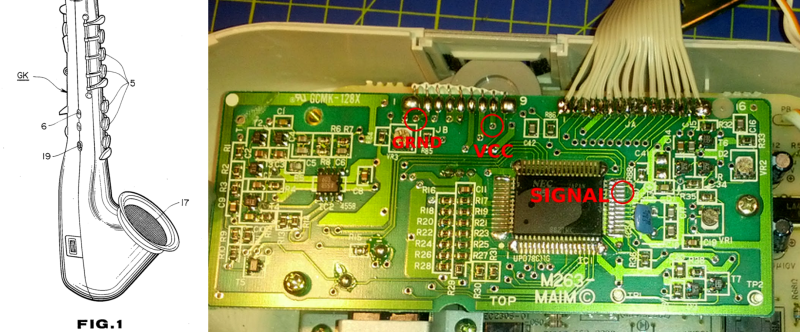It’s great to hear from people who say they’re inspired to fix stuff by reading about hacks here on Hackaday. [Michael Lüftenegger] from Salzburg is one of them. About a year back, he snagged a digital horn from eBay that turned out to be dead-er than advertised and he wrote a post about how he fixed it and gave it a second life.
The Casio DH-100 is an electronic MIDI digital wind controller/synthesizer musical instrument. Your breath flows through the instrument, making it feel pretty similar to acoustic wind instruments. [Michael]’s unit had already seen some attempted, but unsuccessful repairs. Nothing that could not be fixed, except that the main pressure sensor was missing. Without the sensor, the instrument was practically useless. The eBay seller wasn’t lying when he described the unit as working with breath mode turned off!
The original pressure sensor was a moving core coil connected to the ADC input of the DH-100’s micro-controller. But without details of the original, it was difficult for [Michael] to reproduce it. He had a MPX5010 analog pressure sensor lying around, but could not interface it directly with the DH-100. He found a Picaxe M20 in his parts bin and decided this was a good way to build his first Picaxe project. To get analog output, he used the output pins on the Picaxe to build a R-2R resistor ladder DAC. The tricky part was to get the sensor’s dynamic range to match what the original microcontroller was programmed to receive.
To calibrate it, he added two physical switches to adjust the minimum output level of the sensor, which takes care of noise. The maximum output level is adjusted when the instrument is switched on by first blowing in to it. If he doesn’t get it right, it can be reset by pressing both the buttons together and trying once again. He assembled it all on a piece of perfboard, and had enough space inside the instrument to add the perfboard, pressure sensor, switches, and a three-pin serial interface to allow re-programming the Picaxe. The instrument is now fixed, almost a year after he bought it, and [Michael]’s busy learning how to play it. He’s got the Picaxe code on Github, in case there’s someone else with a broken Zanzithothingy.















Please be kind and respectful to help make the comments section excellent. (Comment Policy)